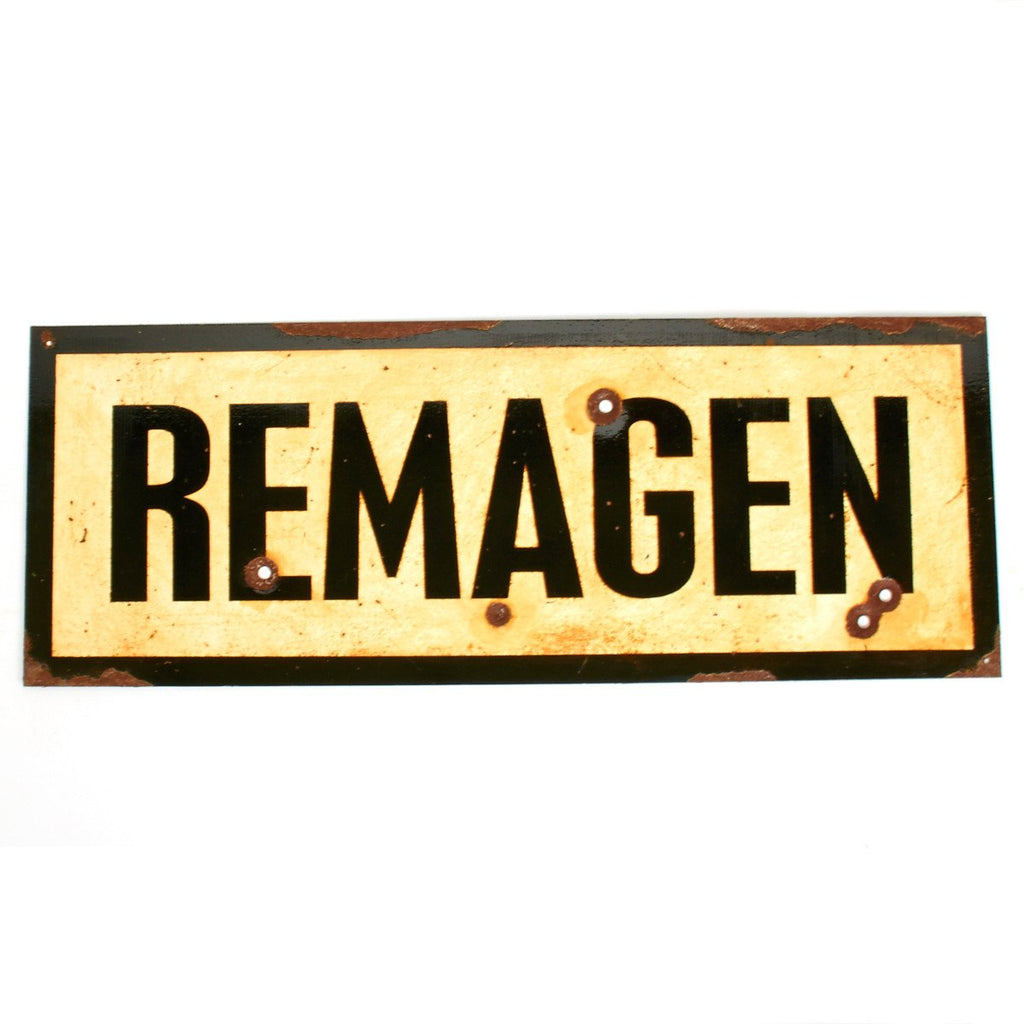WWII Aged Steel Sign - Remagen (33" x 12")
-
New Made Item: No two signs are exactly the same. Why? Each one is individually handcrafted in 18 gauge steel, aged, distressed and totally unique with battlescars and even bullet holes!
Approximately measures: 32.8 L x 12 H (833mm x 300mm).
Weight: 5lbs
The Ludendorff Bridge was originally built during World War I as a means of moving troops and logistics west over the Rhine to reinforce the Western Front. The bridge was designed by Karl Wiener, an architect from Mannheim. It was 325 metres (1,066 ft) long, had a clearance of 14.8 metres (49 ft) above the normal water level of the Rhine, and its highest point measured 29.25 metres (96.0 ft). The bridge was designed to be defended by troops with towers on each bank with machine gun slits in the towers. The bridge carried two railway tracks and a pedestrian walkway. During World War II, one track was planked over to allow vehicular traffic.
During Operation Lumberjack, on 7 March 1945, troops of the U.S. Army's 9th Armoured Division reached the Ludendorff Bridge during the closing weeks of World War II and were very surprised to see that the railroad bridge was still standing. It was the last of 22 road and railroad bridges over the Rhine still standing after German defenders failed to demolish it. U.S. forces were able to capture the bridge. The unexpected availability of the first major crossing of the Rhine, Germany's last major natural barrier and line of defense, caused Allied High Command Dwight Eisenhower to alter his plans to end the war and possibly shortened the war in Europe.
The ability to quickly establish a bridgehead on the eastern side of the Rhine and to get forces into Germany allowed the U.S. forces to envelop the German industrial area of the Rhur more quickly than planned. The Allies were able to get six divisions across the bridge before it collapsed on 17 March 1945, ten days after it was captured. The collapse killed 18 U.S. Army Engineers.
A large number of books and articles in newspapers and magazines on the battle for the bridge have been published. The best-known work on the battle is 1957's The Bridge at Remagen by the American author Ken Hechler In 1968 David L. Wolper produced an American motion picture, The Bridge at Remagen, The film depicts historical events, but is fictional in all other aspects.
- This product is available for international shipping.
- Eligible for all payments - Visa, Mastercard, Discover, AMEX, Paypal & Sezzle


We Buy Military Antiques
Our team expert buyers travels the world to pay fair prices for entire estate collections to singular items.
START SELLING TODAY


